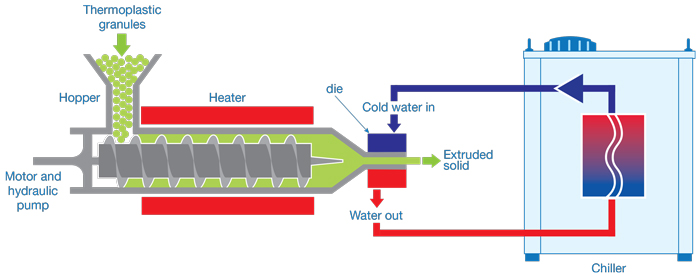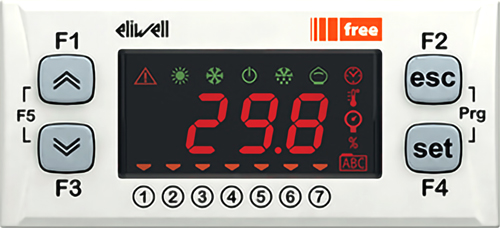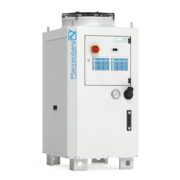Selecting a Packaged Standalone Chiller
By: Adam Wells (Solutions Engineer, Pfannenberg USA, Inc.)
When considering a liquid chiller system, precision and accuracy are critical for the temperature control of the application. Innovative cooling equipment is essential to regulate temperatures to ensure effective control. Find out how to select the best liquid chiller system for a given application by following the very important steps laid out here.
Calculate system size
Correct selection and sizing of the liquid chiller system for a given application can make a significant difference in reducing startup waste, achieving higher quality applications, increasing product output, and improving profitability. Calculating the size of the liquid chiller system using correct application details is critical to achieving accurate process cooling with a liquid chiller. Further, the size or capacity of a liquid chiller system must be designed to accommodate the varying workloads and ambient conditions that affect the system.

Performing sizing calculations
The three main factors for sizing are:
- Incoming water temperature (°F) (also known as processed water temperature),
- Required chilled water temperature (°F) (also known as the setpoint of the chiller), and
- Flow rate (measured in gallons per minute, or GPM).
Understanding the liquid medium
Cooling processes can be handled with any one of three different mediums: water, water/glycol, or heat transfer oil. Which fluid type selected depends on the temperature the system must achieve, cooling loads, and process requirements like flow capabilities, cycle times, material, etc. In cases where pure water is not a usable medium for the application, glycol and heat transfer oil can be utilized partially to create a water-based emulsion. Cooling capacity correction factors must be made if glycol or heat transfer oil will be utilized.
Determine appropriate controls
Liquid cooling demands accuracy and reliability for temperature stabilization, while operators need easy-to-use and highly visible controls and indicating lights. Pfannenberg chillers offer microprocessor-based controls that provide control performance, visibility to operators, and are configurable to meet specific application needs. A variety of control features including flow/pressure alarms, ambient temperature alarms and remote communication options are available to ensure optimal and desired results.

Prolong the life of your liquid chiller system
Preventive maintenance procedures should regularly be performed to keep the liquid chiller system clean and well-maintained. Performing weekly, monthly, and quarterly checks will extend the life of a chiller system. Refer to the procedures provided in the manufacturer’s instruction manual. By following some basic guidelines before, during and after installation, users can extend chiller lifespan, avoid mechanical/electrical problems, and ensure that a liquid chiller system will provide a high level of efficiency and reliability throughout its lifetime.





